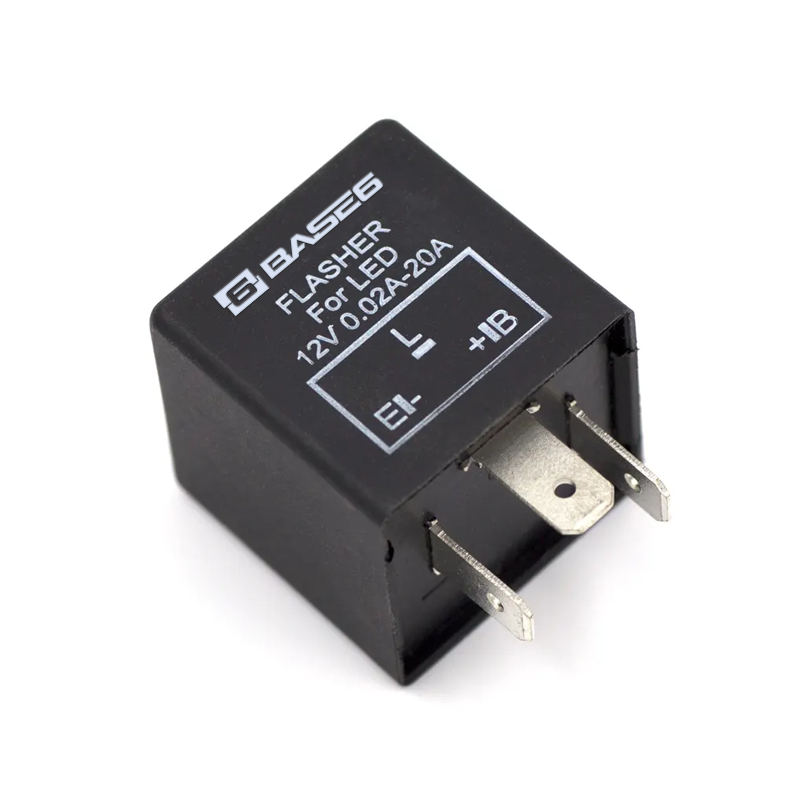As you may already be aware, LED lights are significantly more efficient the conventional incandescent bulbs. This means that LED's draw a substantially lower wattage (aka power consumption). By design, vehicles released with incandescent bulbs use a load flasher relay that will flash fast if a bulb was to "blow". This is because the flasher relay is looking for a set load or current draw that is not receiving on the circuit and is simply saying "hey something's not right here". Replacing your incandescent bulbs to LED also cause this fast flashing known as Hyper Flashing as the relay has lost half of the "load" which keeps it at the right tempo. The effect is exaggerated if, for example, you replace two 21 watt stock turn signals (one per side) with two LED turn signals, each rated at 1.5 watts. Now the load on the original flasher is only 3 watts (2 x 1.5) instead of 42 watts (2 x 21).
There are two ways to fix this Hyper-Flashing. The first is to install a special load-independent LED flasher relay, thus eliminating the need for a specific load to be on the circuit. The second is to "trick" the original flasher relay into thinking the new LED lights have the correct wattage with the installation of LED Load Resistors.
We cover both of these options below:
So now you know why you need to fix hyper flash issues, now we cover the choice between swapping out your Flasher Relay or installing Load Resistors, and what may be more appropriate to your vehicle.
When considering the option between a Flasher Relay or Load resistors, it's important to consider the ease of installation. If your looking for the easiest option, then you will find that replacing the flasher relay is in most cases simpler than installing load resistors, but is only possible under a few following conditions:
If your vehicle meets the 3 points above, you should be able to make use of our BASE6 LED Flasher Relays.
Using a LED Flasher RelayWhen purchasing a LED Flasher Relay, an important step is to ensure you buy a relay with the correct polarity of that in your vehicle. Should you install the incorrect polarity relay there is a high chance that you may damage the relay electronics and void the manufacturer's warranty. You can check the polarity required with the use of a LED test light or a Multimeter (to do so, follow the flasher installation instructions). Should the relays plug-in connectors not fit, adapting the cables is relatively easy. We highly recommend the use of Superior Terminals spades. These are durable and easy to install terminals that you can be confident will outlast the life of your vehicle. NOTE: Some modern vehicles may not be fitted with flasher relays at all. Instead, they are integrated into the central electronic unit (or CANBUS). In this case, you will have no choice but to use Load Resistors. |
 |
|
|
Using LED Load Resistors If you are not able to operate your new LED lights via the aforementioned relays, you would have to use resistors to regulate the flashing frequency (in which case, you need to retain the original relay). Almost all the turn signals in our range will function with the original flasher relay in combination with the BASE6 LED Load Resistors. |
Whatever way you decide to go, we highly recommend never leaving a hyper-flash issue as is. Hyper flashing can be a distraction to other users on the road, as well as draw any unnecessary attention from law enforcement.
|
FREE TO JOIN Membership is FREE, Members Save big for nothing |
|
DON’T PAY RETAIL Members have site-wide pricing discounts on all products! |
|
MEMBER ONLY SALES Member only sales with up to 75% OFF and exclusive Member only giveaways |
|
MEMBER UPDATES Members will be updated on new and upcoming sales before anyone else |
Follow us on Social Media